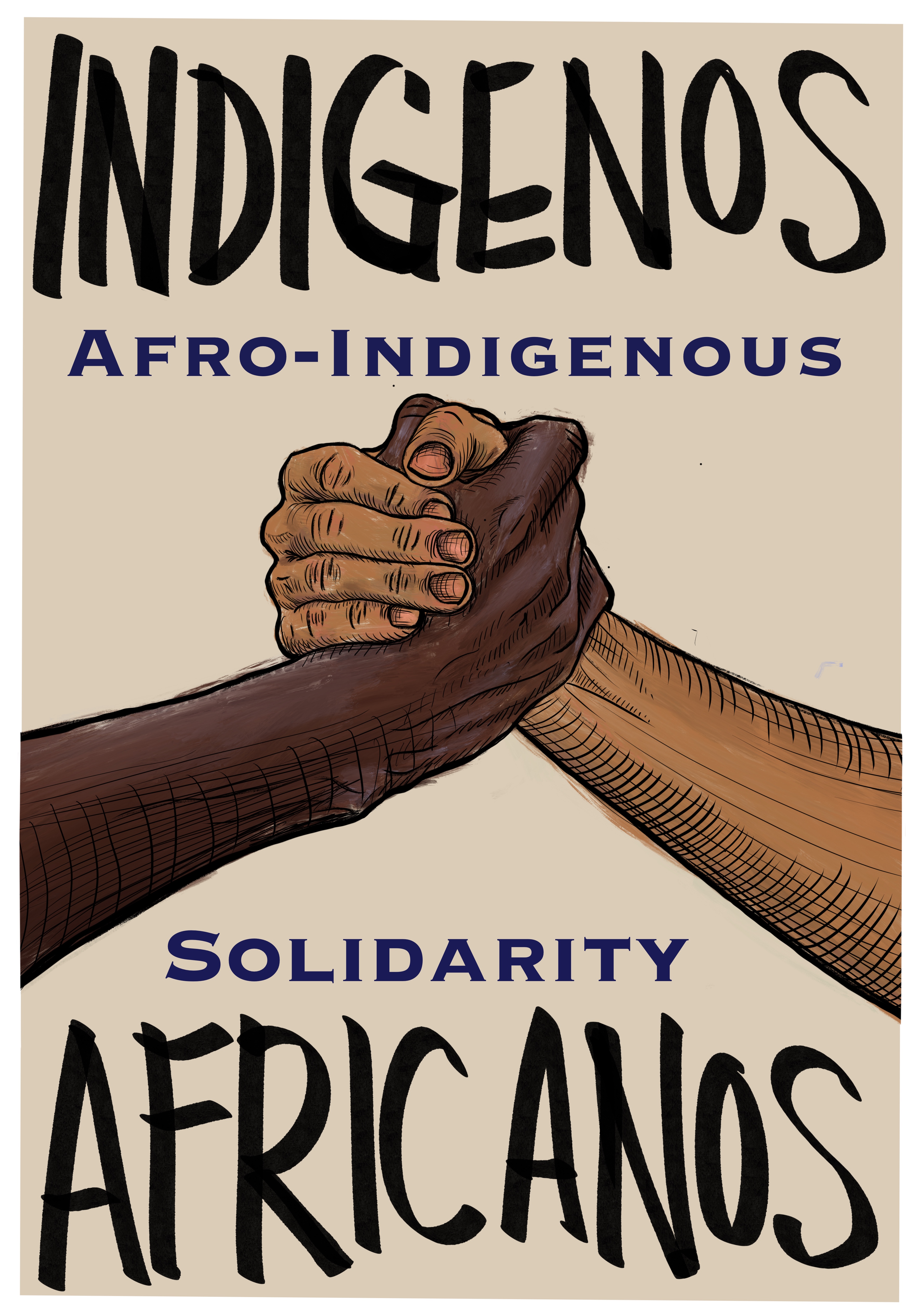Colonial Resistance Poster Series
This project is a poster series representing Indigenous and African Rebellions against Colonial Oppression utilizing design style and printing aesthetics from 1970’s political movements.
This was done outside of class as a part of a separate program requirement to research aesthetic trends and design choices of the 60s and 70s social revolutions and explore their potential to have served colonial resistance movements. I chose to collaborate with my Latin American history Professor, Dr. Harry Franqui-Rivera, for help with proper historical acknowledgment and accuracy. He encouraged my idea to draw inspiration from the graphic posters and newspapers of the Black Panther Party and similar political organizations in the ’70s. So I pondered; What could indigenous and Black people in colonial Spanish America create, given the resources and artistic mediums and traditions available to us today?
L'ouverture Pour La Liberté
(digital illustration, procreate 2020)Here we have an amalgamation of arms and weapons meant to represent a mass of rebelling Black slaves during the Haitian Revolution. The text is in French because that was the ruling class’s language in 1791. The language of the ruler, as it happens in colonial and hegemonic systems- was first forced upon the slaves and the castas, and then appropriated by them. The text translates to L’ouverture for liberty, signifying unity among enslaved people in support of Toussaint Louverture, the general, governor, and first prominent leader of the Haitian Revolution. For inspiration, I found graphic posters from non-profit organizations and arts coalitions speaking out against South African Apartheid.


Indigenos Africanos:
Afro-Indigenous Solidarity
(digital illustration, procreate 2020)In the Enriquillo Rebellion of 1519, Indigenous and African slaves cooperated to escape Spanish subjugation and form maroon communities in the Bahoruco (pronounced as Baoruco) Mountains. This poster advocates for solidarity between the African and Indigenous communities in Hispaniola and exhibits the strength gained when oppressed communities join together. There are details here inspired by techniques seen in European etchings of the era, which would have been the most accessible form of art at the time, considering how easily it could be reproduced in contrast to paintings.
Defiendete
(digital illustration, procreate & Adobe Photoshop, 2020)In this poster design, I have line art depicting La Virgen de Guadalupe, a Catholic figure and the remarkable result of transculturation and syncretism. Despite the connection to Catholicism, she has origins in Aztec mythology, specifically the goddess of earth, Tonantzin. Though first used by the Spaniards to convert indigenous people, she became instrumental in constructing Mexican national identity. Here she is displayed through the metaphor of arming the Indigenous and mestizo workers and peasants, without whom the Mexican
Revolution wouldn’t have been possible. The aureole or the divine rays of sunlight typically seen radiating from holy figures has been replaced with a collection of spears to enforce the idea of armed rebellion.


Organize Against Invasion
(digital illustration, procreate, 2020)Done in a more contemporary graffiti style, I juxtaposed the fine art of Rubens with rough hand lettering and sketching to intentionally subvert eurocentric standards of art. The painting is Ruben’s “St. Sebastian,” which tells the story of a Saint murdered for his faith, a narrative that can be applied to the native people of the Americas. The Christians visited war upon the natives of the western hemisphere and took over their lands based on the doctrine of discovery and religious difference. Here we turn that narrative around and place Cortes in the shoes of St. Sebastian. Again, the intention is to undermine the ideals and standards established by White Christian supremacy using its own art against it.
I would like to conclude by addressing Black Lives Matter. In the modern-day United States, the Black Lives Matter movement is a continuation of BIPOC’s struggle for justice and equality. I hope this exhibit shows that the battle against a hegemonic system built upon religious, racial, and gender differences- transcends the United States and our historical time- and that these processes go back to the initial conquest and colonization of the hemisphere we now call America.
